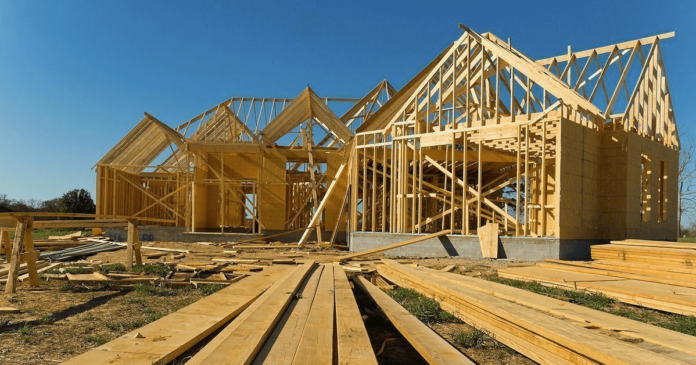In the world of real estate and construction, securing financing can be a daunting task. However, a permanent loan, often abbreviated as a CTP loan, offers a unique solution for those looking to build their dream homes or invest in new construction projects. Construction to permanent loan, exploring what they are, how they work, and why they might be the ideal financial tool for your next construction venture.
Understanding the Basics
Before we dive into the specifics, let’s start with the fundamentals. A construction to permanent loan, often referred to as a CTP loan, is a financial product designed to help individuals or investors fund construction projects, whether it’s What sets a CTP loan apart from traditional loans is its two-phase structure.
2. The Two-Phase Loan
Phase 1: Construction
The first phase of a CTP loan is dedicated to the construction itself. During this phase, borrowers can access funds to cover the costs associated with building, such as materials, labor, permits, and more. What’s unique about this phase is that borrowers only pay interest on the amount they’ve withdrawn, which can result in substantial savings compared to traditional construction loans.
Phase 2: Permanent Mortgage
Once the construction is complete, the loan seamlessly transitions into a permanent mortgage. This means that borrowers don’t have to go through the hassle of applying for a separate mortgage, saving both time and money. The permanent mortgage typically comes with a fixed interest rate, providing stability in an ever-changing market.
3. Advantages of a CTP Loan
Streamlined Process
One of the key advantages of a CTP loan is the streamlined process it offers. With traditional construction loans, borrowers often face the inconvenience of two separate loan applications and approvals. In contrast, a CTP loan simplifies this process, making it more efficient.
Interest Savings
As mentioned earlier, CTP loans can result in significant interest savings during construction. Since borrowers only pay interest on the amount they’ve withdrawn, they can minimize the financial burden associated with ongoing construction expenses.
Rate Lock
In an unpredictable market, having a fixed interest rate on your permanent mortgage can provide peace of mind. CTP loans typically offer the option to lock in your interest rate during construction, protecting you from market fluctuations.
4. Eligibility Criteria
Credit Score
To qualify for a CTP loan, a solid credit score is essential. However, some lenders may have more stringent requirements, so shopping around for the best terms is crucial.
Down Payment
While CTP loans often require a lower down payment compared to traditional mortgages, borrowers should still be prepared to make a down payment of around 20% of the project’s total cost. This down payment ensures borrowers are vested in the project’s success.
Builder Requirements
Lenders may also have specific requirements for builders, so it’s essential to choose a builder who meets these criteria. Builder experience and financial stability are often taken into consideration.
5. Applying for a CTP Loan
Documentation
When applying for a CTP loan, be prepared to provide comprehensive documentation, including detailed construction plans, project timelines, and a budget breakdown. Lenders will want to ensure that your project is well-planned and feasible.
Loan Approval
Upon submitting your application, the lender will evaluate your project’s viability and your financial qualifications. Once approved, you’ll receive funds to begin the construction phase.
6. Managing Your Construction Project
Budgeting
Effective budgeting is crucial when managing a construction project financed by a CTP loan. Proper planning and financial discipline.
Disbursement
During the construction phase, funds are disbursed as needed to cover expenses. It’s essential to keep meticulous records of all expenditures to ensure that funds are used for their intended purpose.
7. Risks and Considerations
Market Fluctuations
While a fixed interest rate provides stability, market fluctuations can impact construction costs. It’s essential to have contingency plans in place to address unexpected cost increases.
Project Delays
Be prepared for potential setbacks and work closely with your builder to minimize disruptions.
8. Alternatives to CTP Loans
Traditional Construction Loans
Traditional construction loans are an alternative if a CTP loan doesn’t align with your needs. However, they come with separate application processes and may have higher interest rates. Read more…
Home Equity Loans
Home equity loans can provide the necessary funds for homeowners looking to renovate. These loans use your home’s equity as collateral.
9. Conclusion
In conclusion, a construction to permanent loan offers a streamlined, cost-effective solution for financing construction projects. Its two-phase structure, interest savings, and rate lock options make it a viable choice for individuals and investors alike.
10. FAQs
1. Can I use a CTP loan for renovations?
If you meet the eligibility criteria, CTP loans can be used for renovations.
2. What is the typical loan term for a CTP loan?
Loan terms for CTP loans can vary, but they typically range from 12 to 24 months for the construction phase, followed by a permanent mortgage with a typical term of 15 to 30 years.
3. Are CTP loans available for commercial construction projects?
Yes, CTP loans are not limited to residential projects and can be used for commercial construction as well.
4. Is it possible to pay off a CTP loan early?
Some CTP loans allow for early repayment without penalties, but checking with your lender for specific terms is essential.
5. What happens if the construction project encounters unexpected costs?
If your project faces unexpected costs, It’s crucial to have contingency plans in place.

